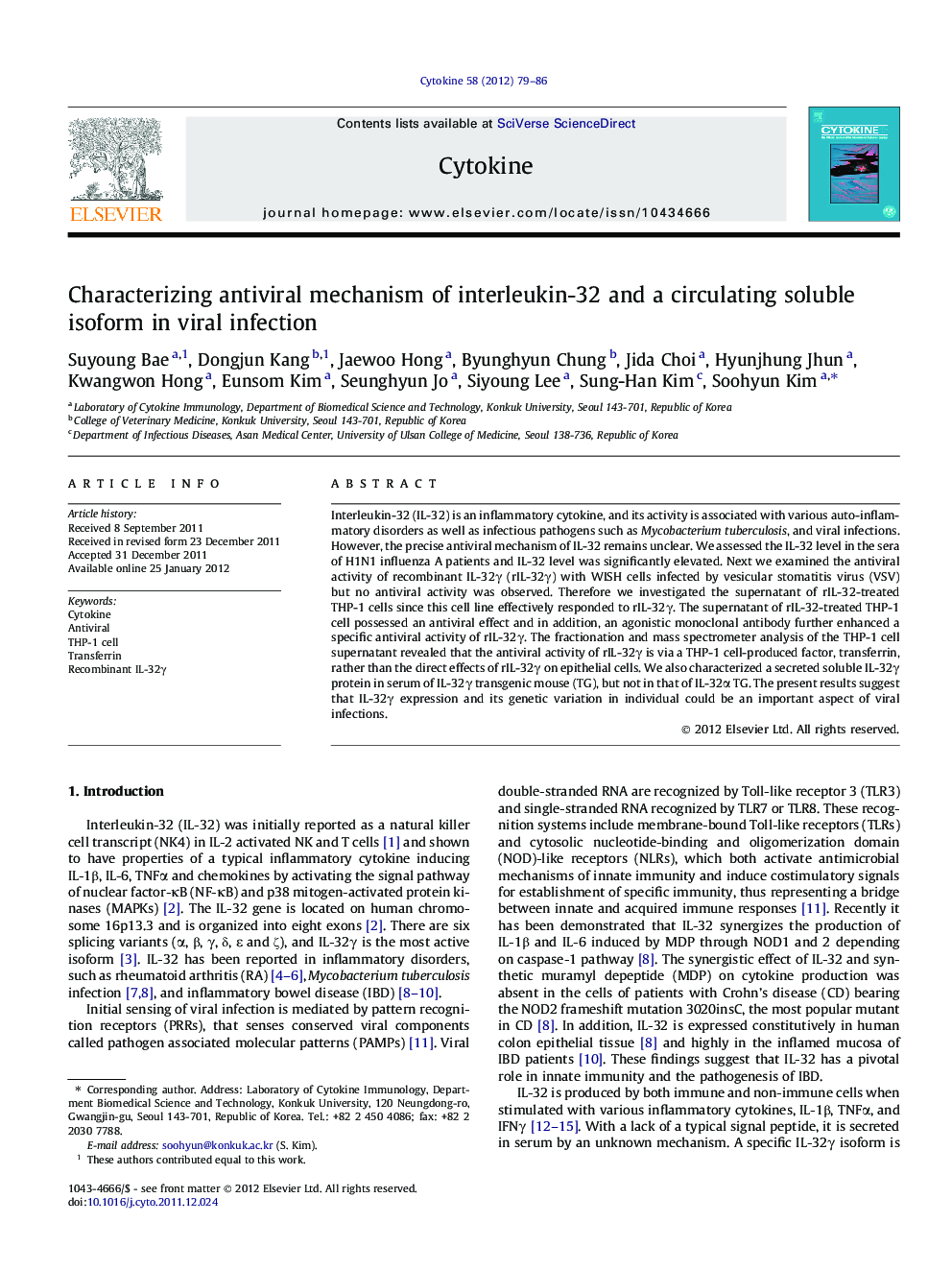| کد مقاله | کد نشریه | سال انتشار | مقاله انگلیسی | نسخه تمام متن |
|---|---|---|---|---|
| 2794494 | 1155286 | 2012 | 8 صفحه PDF | دانلود رایگان |

Interleukin-32 (IL-32) is an inflammatory cytokine, and its activity is associated with various auto-inflammatory disorders as well as infectious pathogens such as Mycobacterium tuberculosis, and viral infections. However, the precise antiviral mechanism of IL-32 remains unclear. We assessed the IL-32 level in the sera of H1N1 influenza A patients and IL-32 level was significantly elevated. Next we examined the antiviral activity of recombinant IL-32γ (rIL-32γ) with WISH cells infected by vesicular stomatitis virus (VSV) but no antiviral activity was observed. Therefore we investigated the supernatant of rIL-32-treated THP-1 cells since this cell line effectively responded to rIL-32γ. The supernatant of rIL-32-treated THP-1 cell possessed an antiviral effect and in addition, an agonistic monoclonal antibody further enhanced a specific antiviral activity of rIL-32γ. The fractionation and mass spectrometer analysis of the THP-1 cell supernatant revealed that the antiviral activity of rIL-32γ is via a THP-1 cell-produced factor, transferrin, rather than the direct effects of rIL-32γ on epithelial cells. We also characterized a secreted soluble IL-32γ protein in serum of IL-32γ transgenic mouse (TG), but not in that of IL-32α TG. The present results suggest that IL-32γ expression and its genetic variation in individual could be an important aspect of viral infections.
► Interleukin-32 expression is associated with viral infections.
► The precise antiviral mechanism of IL-32 remains unclear.
► Mass spectrometer analysis revealed the antiviral activity of rIL-32γ.
► IL-32 antiviral activity is via THP-1 cell-produced transferrin.
Journal: Cytokine - Volume 58, Issue 1, April 2012, Pages 79–86